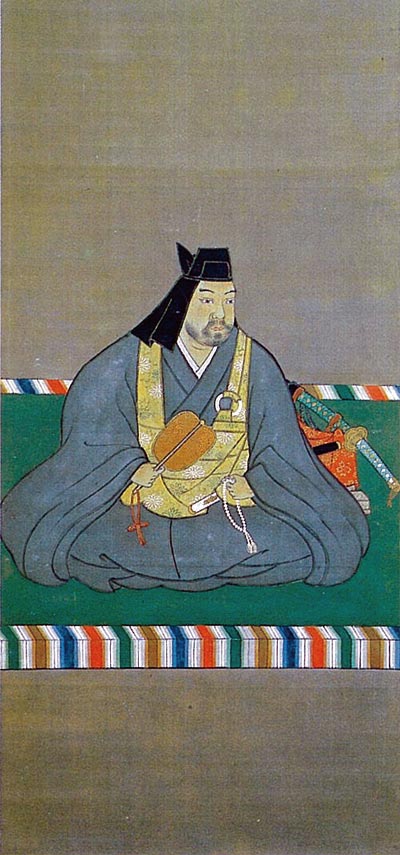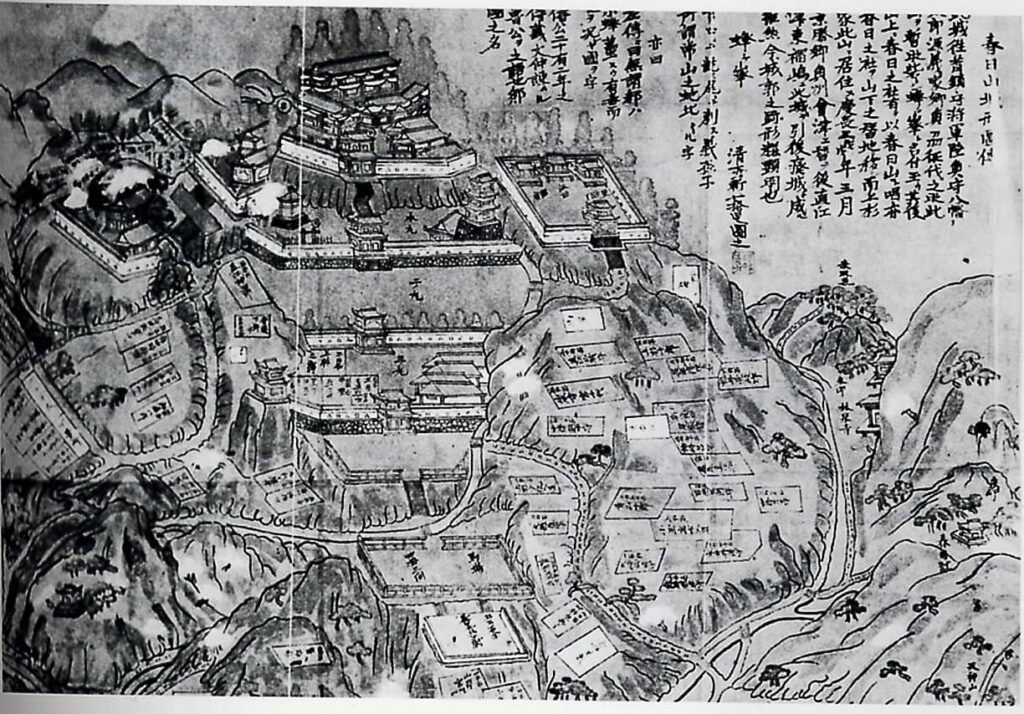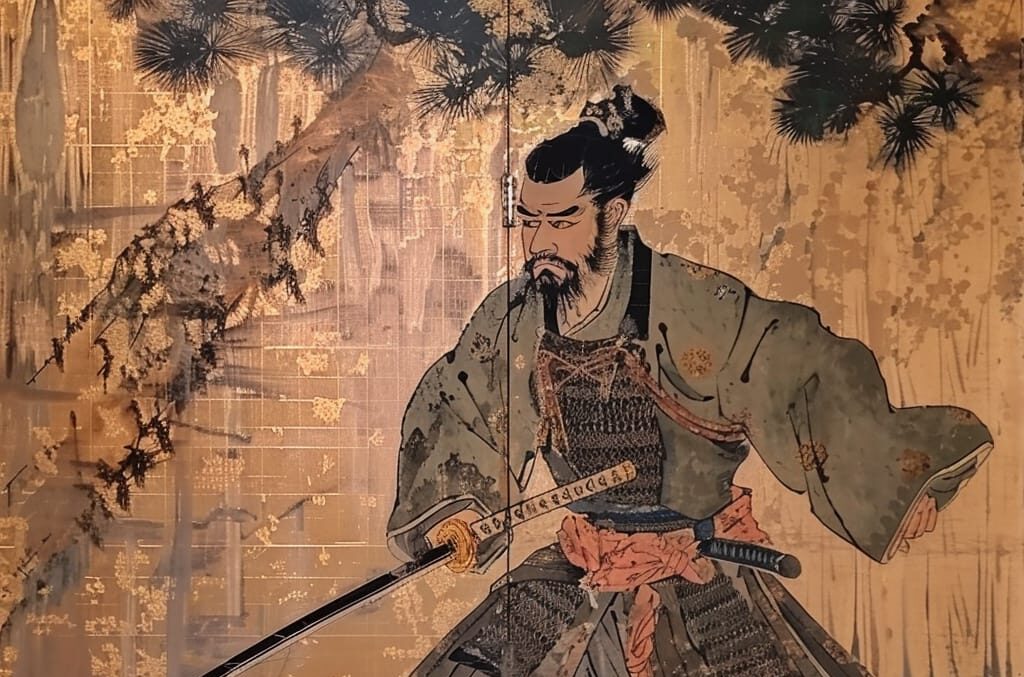Introduction
The Sengoku period, spanning the 15th to the 17th centuries, was one of the most turbulent eras in Japanese history. Marked by social upheaval, political intrigue, and almost constant military conflict, this era saw the rise and fall of many powerful daimyos (feudal lords) who battled fiercely for land and power. Among these figures, Uesugi Kenshin stands out as a paragon of martial prowess, strategic genius, and ethical governance, earning a place in history as one of the era’s most revered and feared warlords. His life story is not just a tale of battles and military campaigns; it is also a narrative about leadership, devotion, and the complex interplay of power and morality in one of history’s most fascinating periods.
Kenshin, originally named Nagao Kagetora, rose from the ranks of minor nobility to become the ruler of Echigo Province (present-day Niigata Prefecture) and one of the most formidable opponents on the battlefield. His rivalry with Takeda Shingen, another prominent daimyo of the time, epitomized the Sengoku period’s relentless warfare and the personal codes of honor that guided the era’s legendary figures. Unlike many of his contemporaries, Kenshin was also deeply influenced by his religious beliefs, particularly his devotion to Bishamonten, the Buddhist god of war, which shaped both his approach to leadership and his conduct in battle.
This blog post aims to explore the multifaceted life of Uesugi Kenshin, delving into his military campaigns, leadership qualities, personal beliefs, and the enduring legacy that cements his place in Japanese history and culture. Through an examination of his triumphs and challenges, we will seek to understand how Kenshin not only navigated the treacherous waters of the Sengoku period but also left an indelible mark on the cultural and historical landscape of Japan.
Early Life and Rise to Power

Birth and Early Years
Uesugi Kenshin, a figure etched deeply in the annals of Japanese history, was born into the Nagao clan during the Sengoku period—a time characterized by ceaseless warfare, political upheaval, and the rise and fall of many great warriors. His early life was set against this backdrop of conflict, shaping him into a leader whose name would become synonymous with both martial prowess and strategic brilliance. The Nagao clan, though significant within the Echigo Province, was embroiled in the wider tumult of the era, positioning Kenshin from birth into a narrative filled with potential for great deeds and significant challenges.
Ascension as Daimyo
The path to leadership was fraught with internal strife within the Nagao clan. Following the death of his father, Nagao Tamekage, the clan faced uncertainty and instability. Kenshin’s elder brother, Nagao Harukage, initially took up the mantle of leadership. However, his tenure was marked by inefficacy and discontent among the ranks, leading to a palpable need for a change in leadership. It was in this climate of internal discord that Kenshin’s destiny as a leader began to unfold. Demonstrating a keen understanding of both governance and military strategy from a young age, Kenshin emerged as a unifying figure within the clan. His ascendancy to the position of daimyo was not just a testament to his innate leadership qualities but also a crucial turning point for the Nagao clan, steering them towards a period of consolidation and strength.
Religious and Philosophical Influences
Central to Kenshin’s approach to leadership and warfare was his profound devotion to Bishamonten, the Buddhist god of war. This spiritual allegiance was more than mere religious observance; it deeply influenced his philosophical outlook and his conduct both on and off the battlefield. Kenshin’s reverence for Bishamonten imbued him with a sense of righteousness and duty, guiding his decisions and shaping his strategies. This unique blend of religious devotion and martial discipline set Kenshin apart from his contemporaries, infusing his leadership style with a moral dimension that resonated with his followers. His belief in justice, tempered by the wisdom of his religious convictions, informed his approach to governance, warfare, and his interactions with both allies and foes, establishing a legacy of honor and integrity that would endure well beyond his lifetime.
Through these early experiences, Kenshin’s path was charted towards becoming one of the most revered leaders of his time. His birth and upbringing instilled in him the values and skills necessary to navigate the complex dynamics of Sengoku-era Japan, while his ascension as daimyo demonstrated his capacity for leadership and change. Moreover, his devout adherence to Bishamonten provided a philosophical foundation that would guide his actions throughout his life, marking him as a leader whose vision was rooted in both the material and spiritual realms.
Military Campaigns and Rivalries
Uesugi Kenshin’s military career is a testament to his strategic brilliance and valor, hallmarks that distinguished him as one of the Sengoku period’s most formidable warlords. His campaigns and the rivalries he fostered not only shaped the course of Japanese history but also left an indelible mark on the cultural memory of the nation, epitomizing the era’s valor and martial ethos.
The Art of War and Key Battles
Kenshin was renowned for his mastery of tactics and strategy, often leveraging the difficult terrain of his native Echigo Province to his advantage. His military exploits were characterized by swift, decisive movements and a deep understanding of his enemies’ weaknesses. One of Kenshin’s most significant military achievements was his defense against the powerful Oda Nobunaga, thwarting Nobunaga’s attempts to consolidate power over all of Japan. Kenshin’s campaigns against the Oda clan demonstrated not only his military prowess but also his commitment to maintaining a balance of power that prevented any single daimyo from dominating the country.
Rivalry with Takeda Shingen
Perhaps no aspect of Kenshin’s military life is more famous than his rivalry with Takeda Shingen, another of the era’s most revered warlords. Their conflict is emblematic of the Sengoku period’s relentless warfare, marked by a mutual respect between two formidable adversaries. The battles of Kawanakajima, a series of five engagements fought between Kenshin and Shingen, are legendary. These clashes, particularly the fourth battle, are celebrated for their tactical ingenuity and the chivalry displayed by both leaders. The image of Kenshin charging into battle against Shingen, with their forces locked in a deadly embrace, has become an iconic symbol of the era’s warrior ethos.
Diplomacy and Alliances
Kenshin’s approach to warfare was not limited to the battlefield. He was also a skilled diplomat who understood the importance of alliances and negotiation. His ability to maintain independence amidst the shifting allegiances of the time was remarkable. Through strategic marriages, political agreements, and sometimes, direct military intervention, Kenshin managed to navigate the complex web of Sengoku period politics effectively. His relationship with the ruling Ashikaga shogunate and other powerful daimyos, including Uesugi Norimasa, whom he supported and from whom he received the adoption into the prestigious Uesugi clan, reflects Kenshin’s adeptness at political maneuvering.
Ethical Conduct and Warfare
Kenshin’s military and political activities were deeply influenced by his personal beliefs and ethical considerations. His adherence to the principles of Buddhism and his devotion to Bishamonten, the god of war, guided his actions on and off the battlefield. Unlike many of his contemporaries, Kenshin was known for his respect towards his enemies, often releasing captured soldiers and avoiding unnecessary destruction. His reputation for fairness and integrity earned him the respect of friends and foes alike, and his ethical approach to warfare distinguished his legacy from other warlords of his time.
Governance and Administration
While Uesugi Kenshin is often celebrated for his military prowess and strategic acumen on the battlefield, his skills in governance and administration also played a crucial role in his legacy as a leader. Kenshin’s approach to ruling was marked by a forward-thinking attitude that prioritized the welfare of his people and the stability of his domain, setting standards that were progressive for his time.

Kenshin as a Ruler
Under Kenshin’s leadership, Echigo Province became a beacon of prosperity and order amidst the chaos of the Sengoku period. Recognizing the importance of a stable and happy populace, Kenshin implemented policies that improved the lives of his subjects. He was known for his fairness and justice, ensuring that laws were applied equally to all, regardless of status. This sense of justice not only endeared him to his people but also contributed to a more orderly and peaceful domain under his rule.
Kenshin’s administration was also notable for its efficiency and organization. He restructured the governance of his lands to ensure that local administration was responsive and accountable. This involved the appointment of capable officials and a system of regular inspections to monitor the condition of the province and the needs of the people. By delegating authority while maintaining oversight, Kenshin was able to foster loyalty among his retainers and efficiency in governance.
Economic Policies and Trade
Economic innovation was another hallmark of Kenshin’s rule. He understood the importance of a strong economy for maintaining a powerful and self-sufficient domain. Kenshin promoted agriculture, encouraging the development of new farming techniques and the cultivation of additional land to increase productivity. This not only ensured food security for his people but also increased tax revenues, which could then be reinvested into the domain.
Trade was another area where Kenshin showed considerable foresight. By fostering safe and open trade routes within and beyond his borders, he ensured that Echigo could benefit from the exchange of goods with neighboring provinces and even with foreign traders. This economic openness contributed to the prosperity of his domain, making it a vibrant center of commerce and trade.
Cultural Patronage
Kenshin’s governance extended beyond the economic and administrative realms into the cultural sphere. He was a patron of the arts and culture, believing that the prosperity of his domain was intrinsically linked to the cultivation of cultural and spiritual life. Kenshin supported temples, commissioned art, and promoted traditional crafts, which not only enriched the cultural landscape of Echigo but also fostered a sense of pride and identity among his people.
His devotion to Buddhism and the patronage of religious institutions underscored his belief in the moral and spiritual well-being of his subjects. Kenshin’s support for culture and religion reflected his broader vision for a domain where the martial and the spiritual, the economic and the cultural, could thrive in harmony.
Through his governance and administration, Uesugi Kenshin demonstrated that effective leadership during the tumultuous Sengoku period required more than military might; it also demanded a deep commitment to the welfare of the people, economic foresight, and cultural patronage. His efforts to improve the lives of his subjects, foster economic growth, and promote cultural vitality not only solidified his power but also left a lasting legacy that transcended the battlefield.
Personal Life and Character
Uesugi Kenshin, while renowned for his military and administrative prowess, was a figure of considerable complexity and depth, with a personal life and character that have intrigued historians and cultural observers for centuries. His beliefs, personality, and the legends that surround him paint a picture of a leader whose influence went beyond the battlefield and governance, touching the hearts and minds of those who followed him and those who continue to study his legacy.
Kenshin’s Personality and Beliefs
Kenshin was known for his austerity and discipline, traits that extended from his personal conduct to his leadership style. He led a life that was frugal and focused, shunning the extravagances common among his contemporaries in the warrior class. This personal austerity was partly rooted in his deep Buddhist faith; Kenshin was a devout follower of Bishamonten, the god of war, which influenced not only his martial ethos but also his sense of duty and justice. His religious convictions guided him in both his personal decisions and his public duties, reflecting a belief in the importance of righteousness and the welfare of others over personal gain.
Despite his reputation as a fearsome warrior, Kenshin was also known for his compassion and consideration for his people. He was deeply concerned with the welfare of his subjects, often taking measures to ensure their well-being during times of war and peace. This blend of martial valor and benevolent governance earned him the respect and loyalty of his followers and the admiration of future generations.
Legends and Myths
The life of Uesugi Kenshin is shrouded in legends and myths that have contributed to his larger-than-life image. One of the most enduring tales is his purported invincibility in battle, attributed to his divine protection by Bishamonten. Stories of his encounters with Takeda Shingen, particularly their legendary duels at Kawanakajima, have been romanticized in Japanese literature and drama, portraying Kenshin as a noble and chivalrous figure.
Another aspect of Kenshin’s life that has fueled speculation is his personal relationships and the mystery surrounding his private life. Despite various theories and rumors, including those about his celibacy or hidden romances, Kenshin remains an enigmatic figure whose personal life is largely obscured by the passage of time.
Comparison with Contemporary Leaders
When comparing Kenshin to his contemporaries, several distinct qualities set him apart. Unlike many daimyos of the Sengoku period, who were often driven by ambition and the pursuit of power at any cost, Kenshin’s actions were deeply influenced by his ethical beliefs and his commitment to the welfare of his people. His rivalry with Takeda Shingen, while marked by fierce military confrontations, was also characterized by mutual respect and a certain code of honor that seems to have governed their engagements.
Kenshin’s approach to leadership, marked by his concern for justice, his strategic genius, and his personal austerity, offers a contrasting perspective to the more conventional images of feudal lords as merely power-hungry warlords. His life story, enriched by the blend of historical fact and myth, continues to captivate those interested in Japan’s rich history, providing insights into the complex interplay of power, personality, and belief in one of the country’s most tumultuous periods.
Death and Legacy
Uesugi Kenshin’s death in 1578 has been shrouded in as much mystery and speculation as many aspects of his life. The circumstances surrounding his passing have given rise to numerous theories, ranging from illness to assassination by a ninja sent by one of his many rivals. Some historical accounts suggest he died from complications related to esophageal cancer, possibly exacerbated by his austere lifestyle and the rigors of his many campaigns. Regardless of the cause, Kenshin’s death marked the end of an era and left a vacuum in the power dynamics of the region, leading to struggles for succession and control within the Uesugi clan.
Succession and the Fate of His Domain
Kenshin’s death triggered a succession crisis within the Uesugi clan, as he left no clear heir. This lack of a designated successor led to internal conflict and weakened the clan’s position, making it vulnerable to external threats. Over time, this contributed to the gradual decline of the Uesugi’s power and influence, as rivals sought to capitalize on the instability. Despite these challenges, the legacy of Kenshin’s leadership and the administrative reforms he implemented would leave a lasting imprint on his domain, influencing the governance and culture of the region for generations.
Kenshin’s Legacy in Modern Japan
Uesugi Kenshin’s legacy extends far beyond his military achievements and governance. In modern Japan, he is celebrated as a legendary figure, a paragon of the virtues of honor, loyalty, and duty that were highly esteemed in the samurai culture. His life and exploits have been immortalized in Japanese literature, film, and television, where he is often depicted as a noble and virtuous warrior, embodying the ideal of the warrior-scholar.
Festivals and memorials in his honor continue to be held, particularly in Niigata Prefecture, where he is revered not only as a historical figure but also as a cultural icon. The annual Kenshin Festival in Jōetsu City draws thousands of visitors, who come to celebrate his life and legacy through reenactments of his battles, traditional arts performances, and other cultural events.
The respect and admiration for Kenshin are also evident in the way he is referenced in popular culture, including manga and anime, where he is often portrayed as a character of great wisdom and martial prowess. These portrayals reflect the enduring fascination with his character, blending historical fact with myth and fiction to keep the story of Uesugi Kenshin alive in the collective consciousness of Japan.
Kenshin’s adherence to his principles, his strategic genius, and his concern for the welfare of his people have contributed to his lasting legacy as one of Japan’s most respected and admired historical figures. His life serves as a bridge between the past and present, reminding modern audiences of the complex interplay between duty, honor, and humanity that defined the lives of the samurai.
Conclusion
Uesugi Kenshin, a figure shrouded in myth and celebrated in history, remains one of the most fascinating and revered warriors of Japan’s tumultuous Sengoku period. His life, characterized by remarkable military prowess, astute governance, profound personal beliefs, and a complex character, offers a multifaceted view into the era he helped shape. Beyond the battlefield and the realms of politics and administration, Kenshin’s legacy is a testament to the enduring power of leadership grounded in principle and compassion.
Kenshin’s military strategies and campaigns, marked by both brilliance and a deep ethical consideration, showcase a leader who sought victory not just for the sake of power but as a means to maintain balance and justice in a period dominated by war. His governance and administrative reforms, aimed at improving the lives of his people and ensuring the prosperity of his domain, highlight a daimyo who valued the welfare of his subjects as much as his own power. Moreover, Kenshin’s personal life and character, enveloped in legend yet undeniably marked by devotion and discipline, continue to captivate and inspire, offering lessons in leadership that transcend time and place.
The legends that have grown around Uesugi Kenshin, blending facts with folklore, have not diminished his historical significance. Instead, they have enriched his story, allowing it to resonate with successive generations and continue to influence Japanese culture and identity. Today, Kenshin is not merely remembered as a warrior but celebrated as a cultural icon, whose life and legacy are honored in festivals, literature, and popular media, bridging the past with the present.
Reflecting on Kenshin’s impact on Japanese history and culture, it becomes clear that his true legacy lies in the principles he embodied and the ideals he pursued. His commitment to justice, his strategic ingenuity, and his compassion for his people serve as enduring reminders of what it means to lead with honor and integrity. In a world still grappling with conflict and leadership challenges, the story of Uesugi Kenshin offers timeless insights into the complexities of power, the responsibilities of leadership, and the unyielding importance of ethical conduct and human compassion.
Additional Sources
When diving deeper into the life and legacy of Uesugi Kenshin, a multitude of sources can provide further insight into this complex figure of Japanese history. Here are some recommended resources, ranging from academic texts and primary sources to cultural analyses and media portrayals, that can enrich your understanding of Kenshin and the era he lived in:
- Academic Books and Journals:
- “Samurai, Warfare and the State in Early Medieval Japan” by Karl F. Friday: This book provides context on the role of samurai and warfare in Japan, offering insights into the societal and political structures that shaped Kenshin’s era.
- “War in Japan 1467-1615” by Stephen Turnbull: Turnbull’s work offers a detailed look at the Sengoku period, providing a backdrop against which Kenshin’s military strategies and battles can be better understood.
- Biographies:
- “Uesugi Kenshin: The Dragon of Echigo” by Stephen Turnbull: While focusing on Kenshin’s military exploits, this biography also delves into his governance, beliefs, and the legacy he left behind.
- “Kenshin Uesugi: Japan’s Greatest Warlord” by J.S.A. Elisonas: An in-depth look at Kenshin’s life, this biography explores his strategies, leadership, and the myths that surround him.
- Primary Sources and Historical Texts:
- “The Chronicle of Lord Nobunaga” by Ota Gyuichi: As a contemporary source, this chronicle offers insights into the period and mentions Kenshin, providing a perspective on how he was viewed by his peers.
- “Echigo Kenshin Ki”: A collection of historical texts and documents related to Kenshin’s life and times, written by various authors from his era (note: may be available primarily in Japanese).
- Cultural Analysis:
- “Samurai and the Culture of Japan’s Great Peace” by Fabian Drixler and William M. Tsutsui: This book offers cultural insights into the era, helping to understand the societal values and norms that influenced Kenshin.
- Media Portrayals:
- Various NHK Taiga dramas and Japanese films have depicted Uesugi Kenshin, offering a mix of historical fact and creative interpretation. Titles like “Heaven and Earth” (1990) present dramatized accounts of Kenshin’s battles and rivalry with Takeda Shingen.
- Manga and anime series such as “Sengoku Basara” and “Samurai Warriors” feature Kenshin as a character, providing a pop culture perspective on his legacy.
- Online Databases and Digital Archives:
- JSTOR and Project MUSE: These academic databases often contain articles and papers on Japanese history, including the Sengoku period and Uesugi Kenshin.
- National Diet Library Digital Collections (Japan): Offers access to digitalized texts and documents related to Kenshin and his era.
Exploring these sources will provide a more nuanced understanding of Uesugi Kenshin, revealing the layers of his character, the complexity of his times, and the enduring impact of his legacy.

